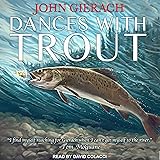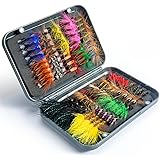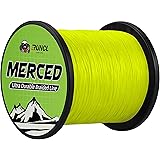Fishing can be an incredibly rewarding pastime, but it often comes with a common challenge: how do you pick the right **fishing lure** for the day? It’s a question every angler, from beginner to seasoned pro, asks themselves. As the video above explains, selecting the perfect **fishing lure** or bait isn’t just guesswork; it’s a strategic decision based on a few crucial factors. Understanding these elements can dramatically improve your chances of a successful catch.
You might be spending hours on the water, only to wonder why the fish aren’t biting. The issue often isn’t your technique, but simply that you’re using a lure that doesn’t match the conditions or the fish’s mood. The solution lies in a bit of knowledge and observation. Let’s dive deeper into the key considerations to help you choose the best **fishing lure** and make your next trip a memorable one.
Understanding How Water Temperature Affects Lure Choice
One of the most significant factors influencing your **fishing lure** selection is the water temperature. This isn’t just about comfort; it directly impacts a fish’s metabolism and, subsequently, its activity level and feeding habits. In colder water, fish tend to be sluggish. Their bodies work slower, meaning they don’t have the energy to chase down fast-moving prey.
Imagine if you’ve just woken up on a chilly morning; you’re probably not in the mood for a sprint! Fish are similar. When the water is cold, they prefer an easy meal. This means opting for smaller, slower baits. Forget the large spinner baits or giant swim baits that create a lot of commotion. Instead, reach for options like underspins, small swim baits, jigs, Ned rigs, or a classic wacky worm. Even live bait, presented slowly, can be incredibly effective.
Conversely, some species, like trout, actually thrive in colder temperatures. While they might be more active, they still typically prefer smaller **fishing lures** such as flies, small spinners, or compact crankbaits. Always remember to adjust your retrieval speed and lure size to match the fish’s metabolic pace for the best results.
Fishing Depth: Where Are the Fish Hiding?
Knowing where your target fish are in the water column is another critical piece of the puzzle. Fish aren’t always at the same depth; their location changes based on species, light conditions, and time of day.
Some fish, such as perch and walleye, are often found hugging the bottom. For these species, a jig worked along the lakebed or a deep-diving crankbait that plummets quickly to their strike zone will be highly effective. The key is to get your **fishing lure** right in front of them.
Other species, like crappies, bass, and pike, are more dynamic. They move up and down in the water column. In low-light conditions, such as early morning or late evening, they often come closer to the surface to hunt. This is the prime time for topwater baits, which mimic struggling prey on the surface. As the sun climbs higher and light penetrates deeper, these fish tend to retreat to deeper, cooler waters. That’s when you’ll want to switch to sinking baits or deep-diving crankbaits to reach them.
Species-Specific Prey Preferences and Mouth Shapes
Every fish species has a preferred diet, and this can even change with the seasons. A smart angler does a little homework to understand what their target fish typically eats. For instance, a largemouth bass might primarily feed on crayfish and small bait fish during the spring. However, come summer, as bluegills and frogs become more abundant, their diet shifts to these new, readily available food sources. Matching your **fishing lure** to these seasonal shifts can lead to more bites.
Furthermore, a fish’s mouth shape can give you valuable clues about its feeding habits. Consider the northern pike and musky; they have upward-opening mouths, indicating they often ambush prey from below. This suggests that topwater lures or lures that suspend just below the surface, mimicking small fish, frogs, grasshoppers, or even rodents, would be ideal for a northern pike. In contrast, fish like carp or suckers have mouths positioned on the bottom, perfectly adapted for sifting through the lakebed for food. For these bottom feeders, baits like dough balls or worms fished directly on the bottom are highly effective.
Artificial Lures vs. Natural Baits: The Great Debate
Anglers have two main categories for attracting fish: artificial **fishing lures** and natural baits. Both have their advantages and disadvantages.
Artificial lures are designed to mimic a variety of prey, from small bait fish and worms to frogs and insects. They rely not just on appearance but also on vibration, flash, and movement to entice a strike. Many lures feature rattle chambers, which are especially useful in murky water to help fish locate your offering by sound. They are generally more durable than natural bait and don’t require refrigeration, making them convenient for longer trips. Also, you won’t have to worry about them spoiling or smelling.
Natural baits, on the other hand, offer the real deal. This includes live options like minnows, worms, or leeches, as well as dead baits like shrimp, cheese, or bread dough. Their natural scent and texture can be irresistible to fish. However, natural baits can be messy, often spoil quickly, and frequently come off the hook, requiring constant re-baiting.
The choice between the two often comes down to preference, the specific fishing conditions, and the target species. Sometimes, nothing beats the lifelike action and scent of a live minnow. Other times, the precise presentation and durability of an artificial **fishing lure** are exactly what you need.
Adapting to Environmental Conditions: Water Clarity and Vegetation
The environment you’re fishing in also dictates your **fishing lure** selection. Two primary environmental factors are water clarity and vegetation.
In murky or turbid water, visibility is low. Fish rely more on their other senses, like the lateral line to detect vibrations. Here, brightly colored lures (like chartreuse or fluorescent orange) stand out better, and lures with built-in rattle chambers become invaluable. The sound and vibration help fish pinpoint your lure even if they can’t see it clearly.
Conversely, in clear water, fish have excellent visibility and can be spooked by unnatural colors. In these conditions, natural colors and patterns that closely mimic the local prey are often more effective. Think subtle greens, browns, and silvers that blend into the environment.
Vegetation is another key factor. If you’re casting into dense weeds or lily pads, traditional lures with treble hooks are an invitation to frustration, getting snagged on every cast. Instead, opt for single-hook lures or, even better, weedless options. Lures like a weedless frog or a Texas rig are specifically designed to glide through heavy cover without getting hung up, allowing you to present your **fishing lure** directly into areas where fish love to hide and ambush prey.
The Art of ‘Matching the Hatch’
One of the most time-honored sayings in fishing is to “match the hatch.” This concept is fundamentally about choosing a **fishing lure** or bait that closely imitates the natural prey abundant in the specific body of water you’re fishing at that moment. It’s about being an observer before you’re a caster.
Imagine if you see schools of silvery, two-inch minnows darting around near the shore. Your best bet for success would be to select a silver **fishing lure** that is roughly two inches long. If you notice young perch swimming in the shallows, and it’s clear the predatory fish are keying in on them, then a perch-colored lure becomes your most effective weapon. It’s not to say that other lures won’t catch any fish, but by matching the hatch, you’re offering fish exactly what they’re already looking for and expecting to eat.
This principle extends beyond just size and color. It also applies to movement. If the local insects are slow-moving caterpillars, a topwater lure worked slowly might be perfect. If dragonflies are zipping around, a fast-retrieved, erratic lure could be the ticket. Paying attention to these details can make a significant difference in your success when selecting the right **fishing lure**.








